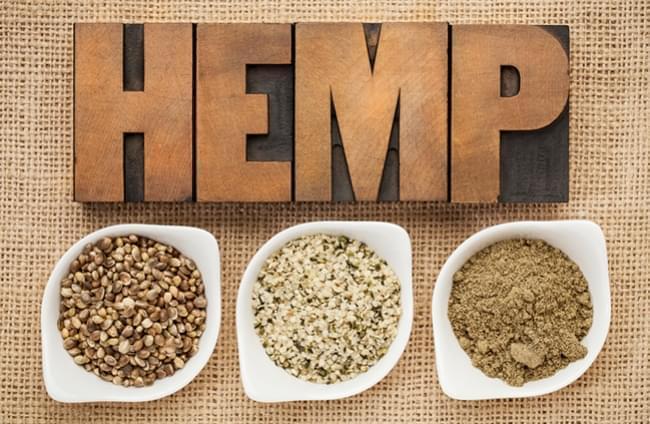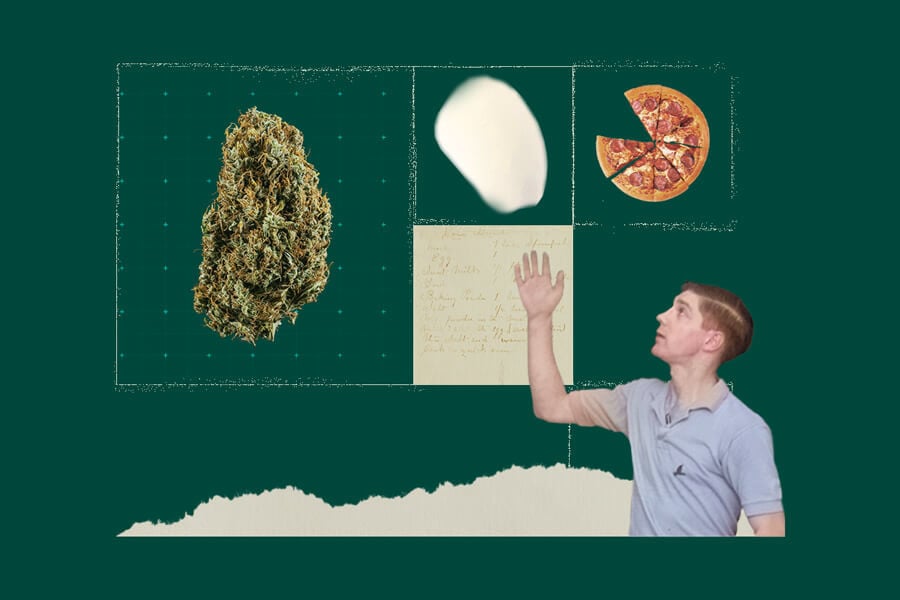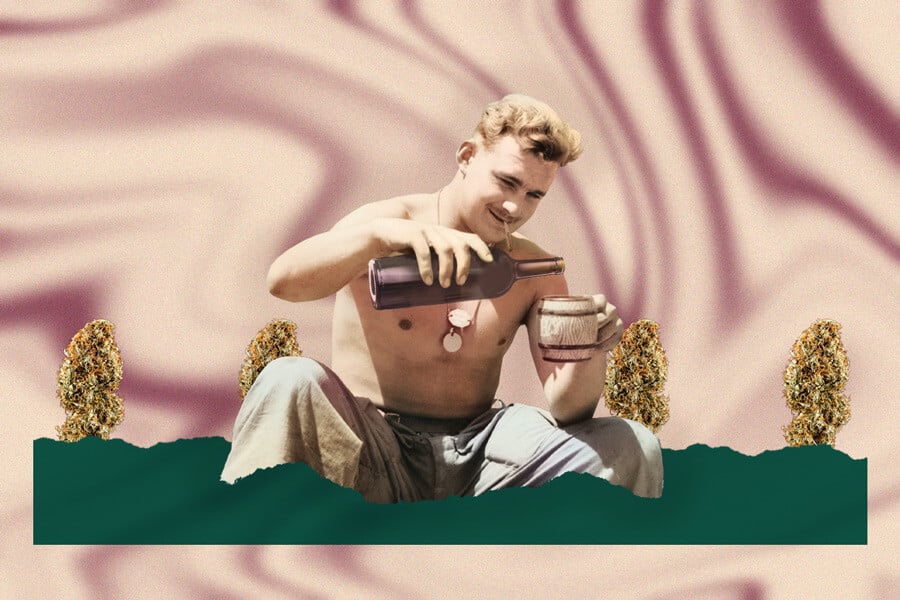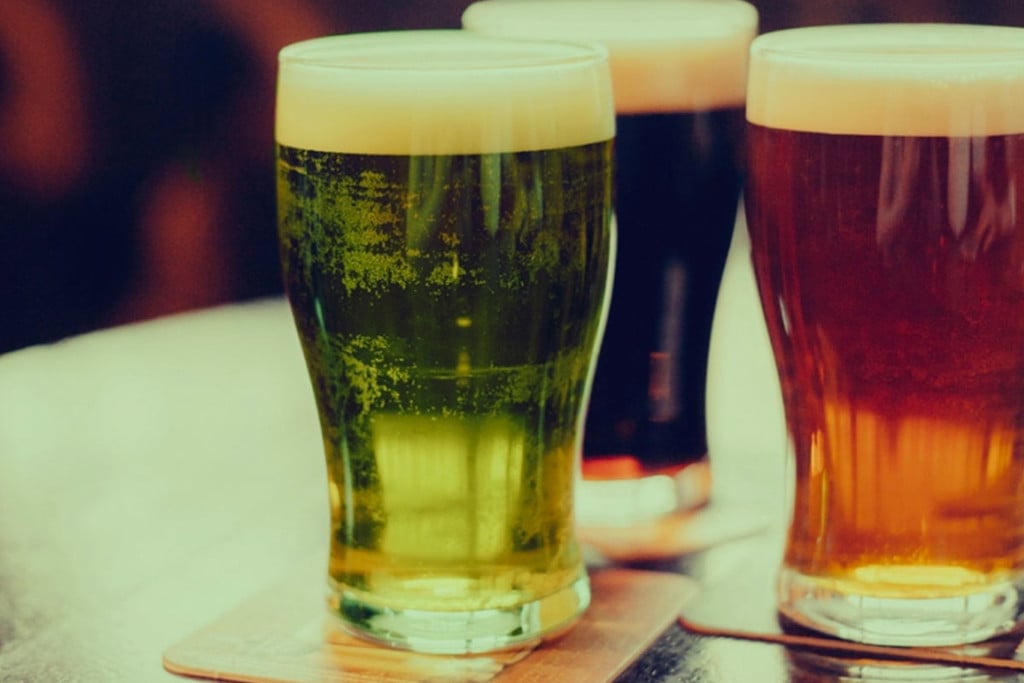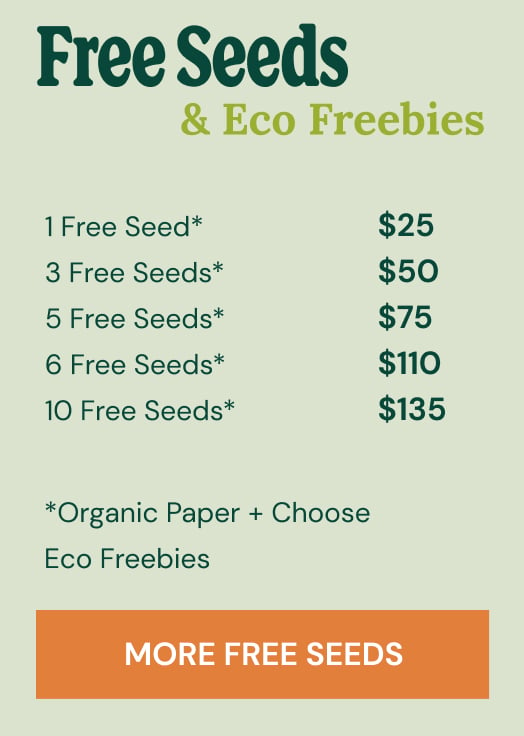.
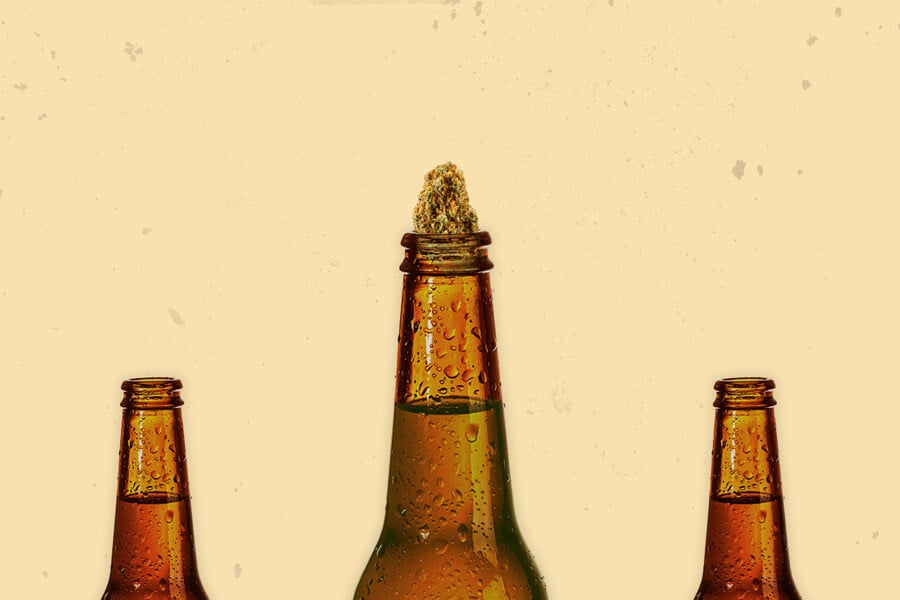
How To Make Cannabis Infused Beer
Making your very own home-brewed canna-beer is easy to do! Why? Hops and cannabis are basically cousins. Try our recipe for a delicious canna-brew.
Contents:
In the ever-evolving landscape of recreational cannabis, the intersection of weed and beer has landed firmly in the crosshairs of marijuana lovers and fermentation enthusiasts alike. Both cannabis and beer are two of the most popular means of kicking back and relaxing; the former offers a mellow stoning effect, while the latter provides a subtle sociable buzz.
While there are certainly dangers at play when hitting bongs and guzzling pints simultaneously, pairing weed and beer responsibly can amplify each other's effects to provide a pleasant mindset ideal for chatty parties and social gatherings. So, get ready to dive into the world of weed-infused beer. You'll discover the benefits of these uplifting concoctions, the differences between THC and CBD beers, and how to make your own at home. Let's get brewing!
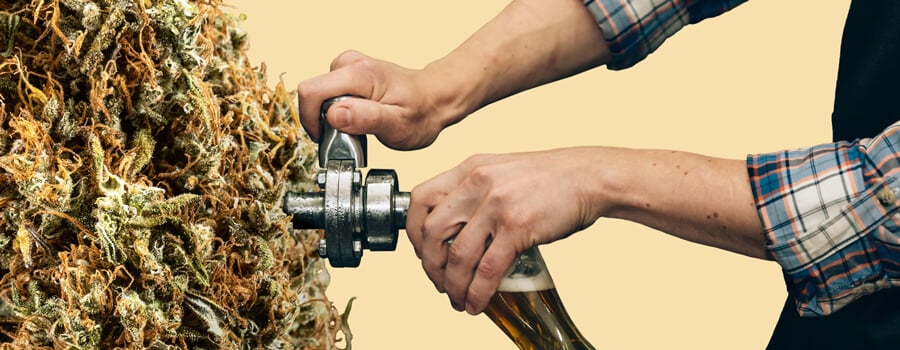
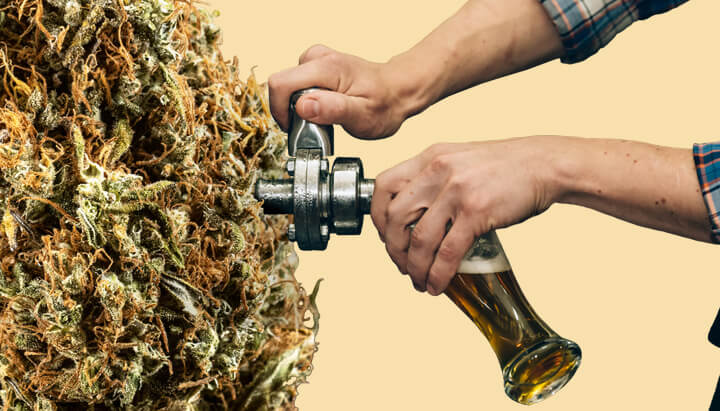
Can You Infuse Beer With Cannabis?
Humans have capitalised on the effects of cannabis and beer separately since antiquity. The marijuana-based beverage bhang, a mix of weed, milk, and nuts, dates back to around 1,000 BC in India. Similarly, people in China started necking booze way back in 7,000 BC. However, the combination of the two arose, as far as we know, in the contemporary era. Before the dawn of cannabis legalisation in the United States, pioneering brewers started creating craft beers using the herb in the early 2000s.
There you have it: Although still a relative rarity, cannabis-infused beers certainly exist. Consumers in countries such as Canada are able to grab these brews directly off the shelves. However, those living elsewhere will have to go through the extra effort of brewing their own at home. So, let's get down to it and start with one of the most important questions: Which beers go best with buds?
Which Beers Are Best Brewed With Cannabis?
Walk into any pub, and you'll find a plethora of beers, including mainline commercial lagers, alongside the rare creations of local microbreweries. The sheer selection of beers parallels the diversity of strains available to weed users. But which combinations offer the best experience? In truth, this all boils down to personal preference. However, some combinations to get you started include:
- Lager: Known for their crisp and clean profiles, lagers serve as an excellent foundation for THC and tasty terpenes. Their mild flavors allow plenty of room for the taste of specific strains to shine through. Moreover, their moderate alcohol content works well when introducing the psychoactive effects of cannabis into the equation.
- Stout: This beverage provides a richer experience. The dark, malty, and earthy tones go hand-in-hand with certain cannabis strains. Stout brings notes of coffee and chocolate to the table and also features a higher alcohol content than lager.
- Pilsner: Pilsners are refreshing, light and crisp. Although a type of lager, pilsners differ in that they possess more of a hoppy and spicy flavor, which derives from a different yeast used during the fermentation process.
- Indian pale ale: Drinks that fall into this category are highly hopped, giving them a pleasant bitter taste. For the adventurous palate, they go well with either complementary earthy or contrasting sweet cannabis strains.


What are the Benefits of Cannabis Beer?
So, what exactly does cannabis beer offer that joints, edibles, and extracts don't? Below are some of the main reasons why cannabis users partake in an occasional marijuana-infused beverage:
- Hard-hitting high: Cannabis beer offers something distinct that other weed preparations don't—the presence of alcohol. If you've ever combined marijuana and alcohol, you'll know that things can quickly take a turn for the worse, turning a fun night of dancing and chatting into a disastrous occasion spent spewing into the toilet bowl.
- Why? Because combining THC and alcohol results in a far more intense high; research[1] shows that alcohol causes a higher peak of THC concentration in the bloodstream. While a potential recipe for disaster, cannabis beer can also produce a superior buzz for experienced and sensible users. The key is moderation.
- Two birds with one stone: If you're somebody who enjoys smoking a joint as you sip on a pint, cannabis beer can help you condense two activities into one. The beverage will get you high and tipsy simultaneously, removing the need to juggle the tasks of pouring beers and rolling cones. However, keep in mind that you'll experience a much more intense effect, as orally-consumed THC hits harder and lasts much longer.
- Tackles tension: The THC in cannabis results in a release of the feel-good hormone dopamine, whereas alcohol stimulates GABA receptors that regulate anxiety. Taking both substances together can cause some users to feel more relaxed. But remember, it's truly a balancing act!
THC vs CBD beer
When discussing cannabis, we're not just talking about high-potency strains. Rather, the effects of weed boil down to hundreds of unique phytochemicals, including myriad cannabinoids and terpenes. Among these compounds, THC and CBD are the most well-recognized for influencing the mind and body.
THC underpins the quintessential cannabis experience and gives rise to sensations of euphoria, creativity, and giggles, as well as side effects, including red eyes and a dry mouth. In contrast, CBD doesn't exert a high. Instead, this molecule has gained a reputation for a clear-headed and lucid effect.
When it comes to crafting cannabis beer, you can determine the effects of the bottled product by choosing strains with differing levels of THC and CBD. Those high in the former will produce a powerful psychoactive effect, whereas those abundant in the latter will focus more on relaxation. Then, select strains high in both compounds offer the best of both worlds.
Preparing Your Cannabis
Before brewing, you'll need to prepare your weed accordingly. You see, raw cannabis contains very little THC. Instead, the molecule exists as the chemical precursor THCA, which doesn't produce a psychoactive effect. To convert THCA into THC, you'll need to decarboxylate your cannabis. This might sound complicated, but it simply involves exposing your buds to a little heat. Follow the simple steps below to get the job done:
- Grind your weed: Start by grinding all of your weed into a coarse powder. This will drastically increase the surface area of your plant material and increase the efficacy of the decarboxylation process. The beer recipe below calls for 20g of cannabis, so you have a fair bit of grinding to get done!
- Preheat the oven: Crank up your oven to 110°C and let it warm up while you carry out the next step.
- Prepare your tray: Line a baking tray with baking paper and spread your ground weed across it as evenly as possible.
- Get cooking: Place your tray into the oven and set a timer for 30–40 minutes.
- Let it cool: After your kitchen timer pings, remove your weed-filled tray from the oven and set it aside to cool.
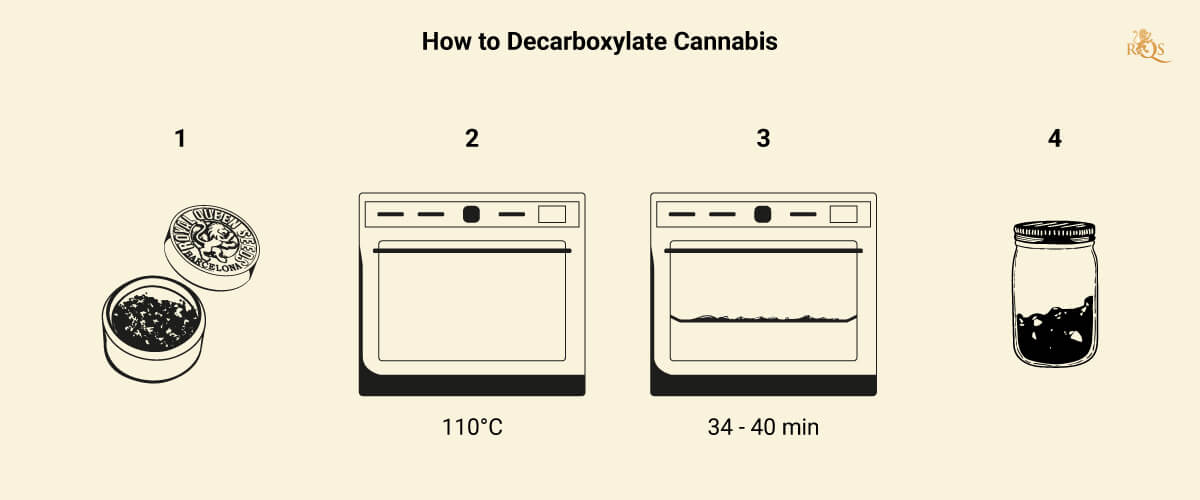
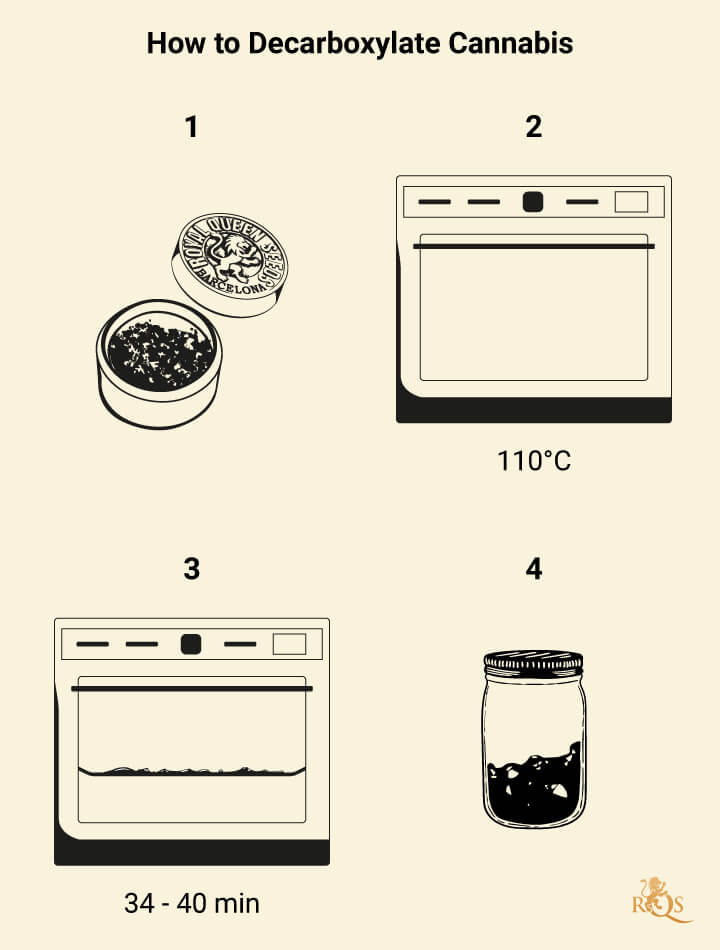
How To Brew Cannabis Beer at Home
With a big pile of ground and decarbed cannabis at your disposal, you're ready to start brewing your first batch of weed beer! Discover the ingredients and equipment you'll need during the process below. Then, dive into the recipe and start dreaming about your first swig.
Ingredients
- 20g of ground and decarbed cannabis flower
- 85g hops pellets (we recommend Citra hops)
- 4l light malt extract syrup
- 400g malting barley
- Pack of slow fermenting yeast
Equipment
- French press
- 30l pot
- 10l fermentation bucket
- Syphon tube
- 2 large muslin bag
- Large zip lock bag
- Rolling pin
- Strainer
- Large bowl
- Steriliser fluid
- Glass beer bottles
- Capper and caps
- Thermometer
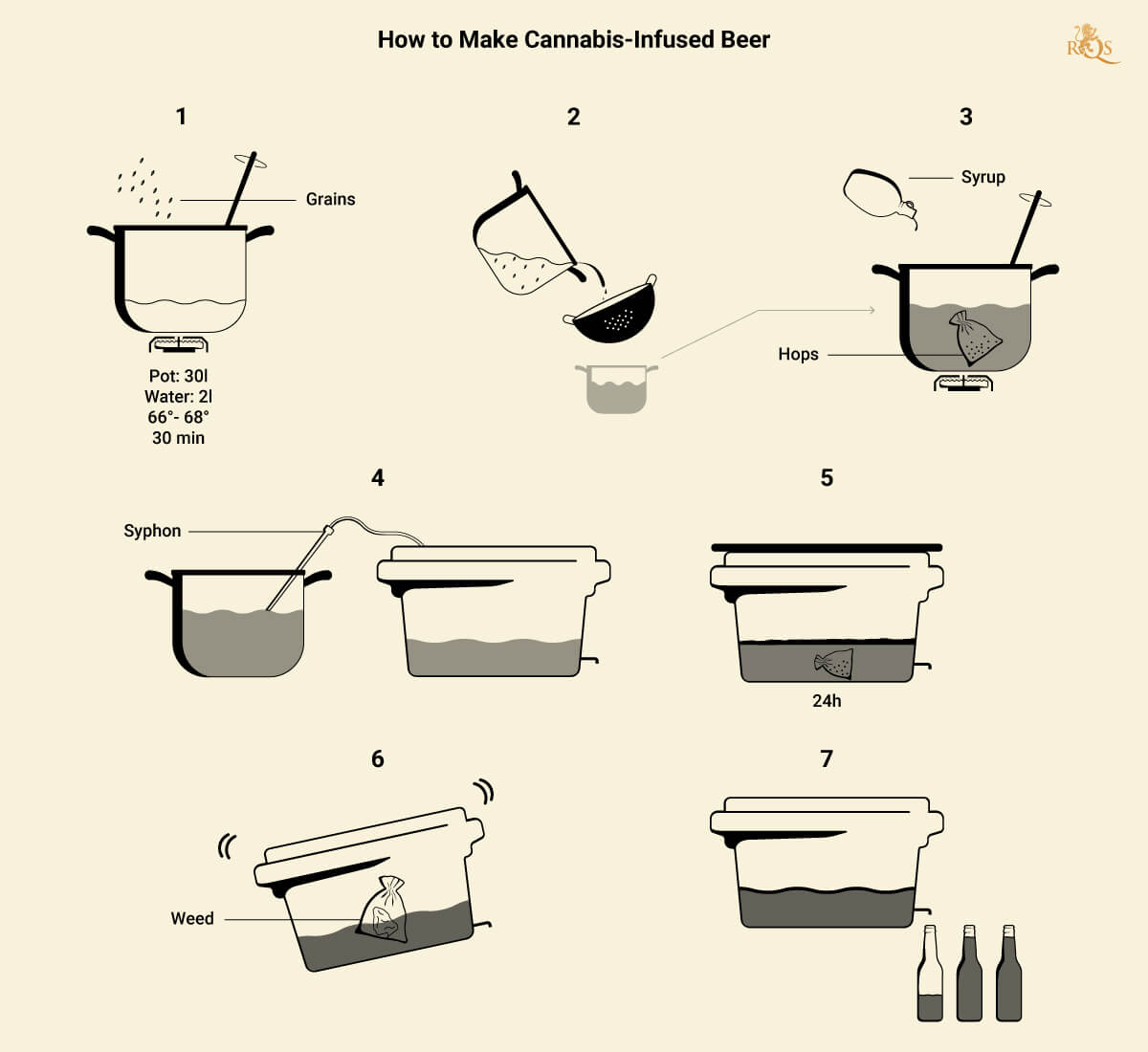
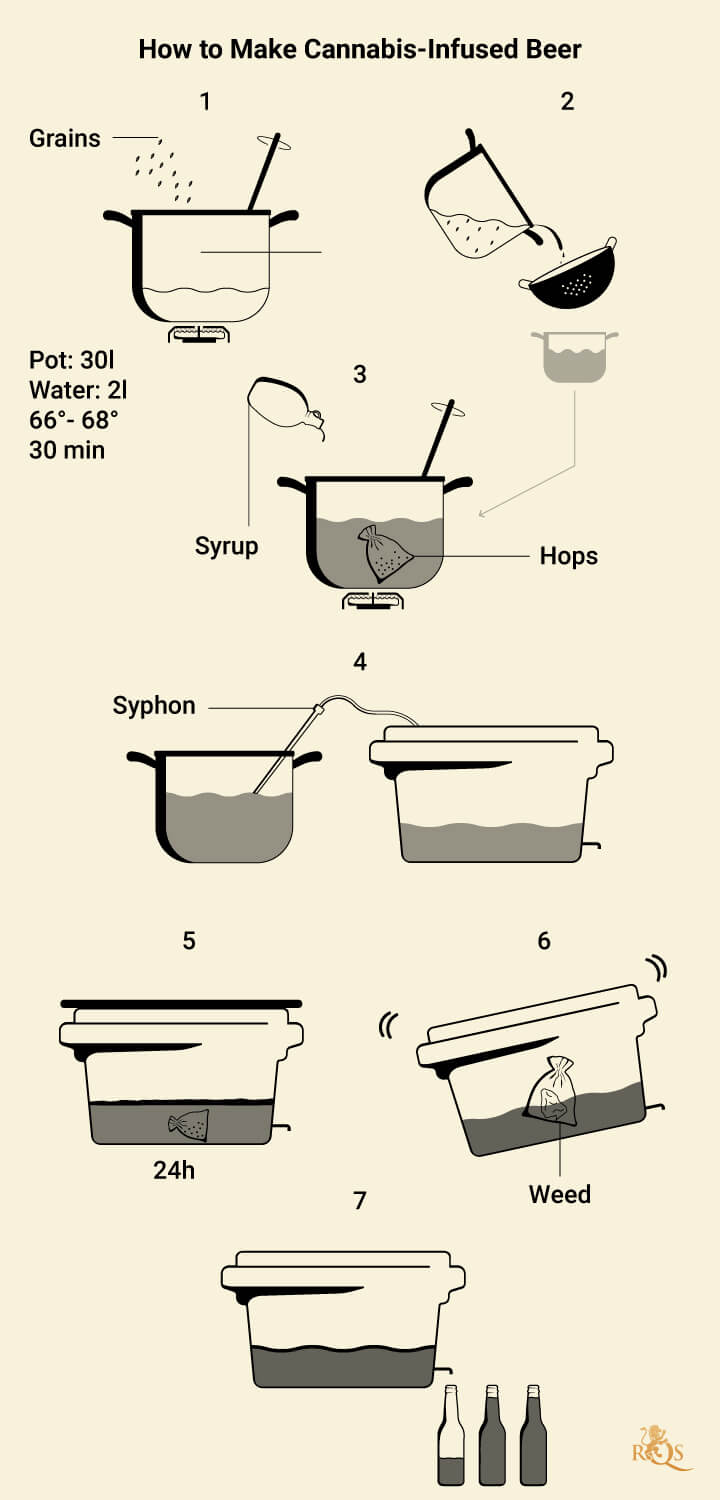
Step-By-Step Brewing Process
- Crack grains: Load your malt grains into a zip-lock bag. Use your rolling pin to lightly bash them to crack their outer shell without completely crushing them.
- Boil grains: Fill your 30l pot with 2l of water. Turn on your stovetop and use your thermometer to get the water up to 66–68°C. Add your cracked grains and boil them for thirty minutes, stirring occasionally.
- Strain grains: Place your strainer over a large bowl and pour the mixture through it. Discard the grains and pour the strained liquid back into the 30l pot.
- Add syrup: Add your light malt extract into the pot and stir until completely dissolved. Then, top up the pot to a total volume of 6l.
- Hop to it: Time to add the hops! Load them into one of your muslin bags and tie it closed. Place the bag into the pot and bring it to a boil. Reduce the heat and let the concoction simmer for one hour, stirring occasionally. Then, remove your pot from the stove, remove the hops, and let it cool completely.
- Sanitise and transfer: Thoroughly sanitise and rinse your syphon and fermentation bucket according to product instructions. Use your syphon to transfer your liquid from the pot into the fermentation bucket.
- Inoculate your vessel: Add your pack of slow-fermenting yeast into the fermentation bucket; these microbes will convert the sugars into alcohol over the coming days. Secure the lid and airlock the top of the bucket. Within 24 hours, the bucket's contents should develop a froth layer—a sign of fermentation.
- Sterilise muslin bag: Once you notice a froth layer developing, place your second muslin bag into a pan of boiling water for 10 minutes to sterilise it. Afterwards, remove it from the pan and let it cool just enough so you can handle it safely.
- Throw the weed: Add your weed to the warm bag and tie it closed. Place the bag into the fermentation bucket and secure the lid.
- Let fermentation do its thing: The yeast will work hard over the next ten days to ferment your mixture, turning it into beer. Both the fat and alcohol within the solution will draw out the THC and other compounds from your weed, infusing it into the beer. Lightly shake the bucket once per day to agitate the ground cannabis.
- Bottle up: Once ten days have passed, you're onto the most exciting part of the process: Bottling! Remove the bag of weed from the bucket. Grab your bottle and open the spigot on your vessel to fill it up. Use a capper to cap your bottles and place them in the fridge.
Cannabis Beer Is Only the Beginning
Congratulations, you now have a fridge filled with home-brewed weed beer! Keep in mind that you're dealing with a beverage just as strong as cannabis edibles, but one that also contains booze. Start extremely slowly with just a couple of sips until you get a feel for your beer and how it affects you.
Once you're familiar with the impact, invite a few friends over and guide them through the process of cracking open a cold homebrew. Now that you've brewed some weed beer, why not try your hand at other creations? Hemp beer harnesses the flavor of weed without the high, and cannabis wine offers an entirely different way to enjoy booze and buds.


























